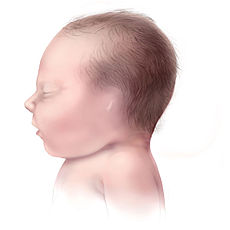
Visit and Join the WeHeal Anotia/Microtia Community.
Information and References:CDC | Wikipedia
Anotia Clinical Trials: Clinicaltrials.gov
Microtia Clinical Trials: Clinicaltrials.gov | In Clinical Trials | EU Clinical Trials Register | WeHeal Guide to Researching Clinical Trials
Patient Resources and Related Organizations: earcommunity.org
News and Media: News-Medical.net | NIH | NIH
Anotia and Microtia are birth defects of a baby’s ear. Anotia happens when the external ear (the part of the ear that can be seen) is missing completely. Microtia happens when the external ear is small and not formed properly. Often, anotia/microtia are grouped together.Anotia/microtia usually happens during the first few weeks of pregnancy. These defects can vary from being barely noticeable to being a major problem with how the ear formed. Most of the time, anotia/microtia affects how the baby’s ear looks, but usually the parts of the ear inside the head (the inner ear) are not affected. However, some babies with this defect also will have a narrow or missing ear canal. Types of Microtia – There are four types of microtia, ranging from Type 1 to Type 4. Type 1 is the mildest form, where the ear retains its normal shape, but is smaller than usual. Type 4 is the most severe type where all external ear structures are missing —anotia. This condition can affect one or both ears. However, it is more common for babies to have only one affected ear.
Visit and Join the WeHeal Anotia/Microtia Community.
WeHeal is very grateful to our valued sources of information which include Wikipedia, WebMD, ClinicalTrials.gov, Cancer.gov, Infoplease, and the US CDC (Center for Disease Control).